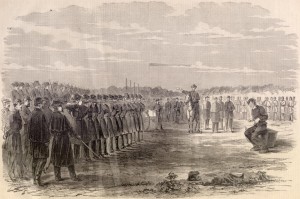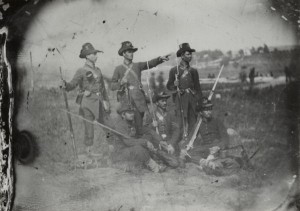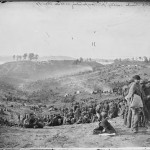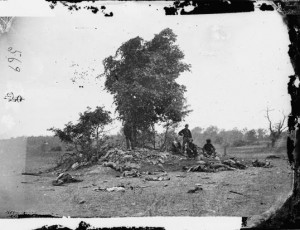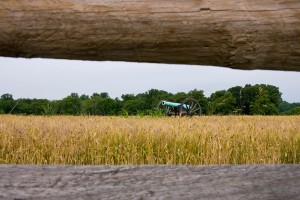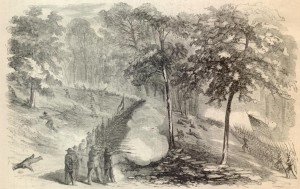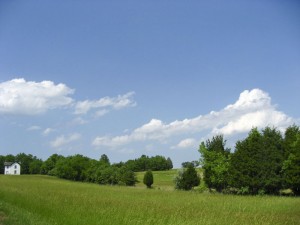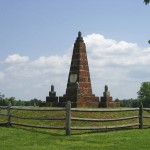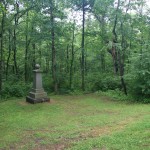 Among the first units of the Army of the Potomac to pass into Pennsylvania on June 30th, 1863, the Iron Brigade enjoyed the cheering crowds and free food from grateful civilians that Robert E. Lee’s “Army of Liberation” had been expecting but never saw. The men that made up the Brigade — of the 2nd, 6th and 7th Wisconsin, the 19th Indiana, and the 24th Michigan — spent the night camped where Marsh Creek crosses the Emmitsburg Road (this area today is a non-descript dip in Highway 15, but if you know what to look for, you can find it). Members of the 19th Indiana pulled picket duty on the northern border of the camp, and found themselves the very tip of the spear of the Union Army, the furthest north and closest to the enemy. A few of the men on picket duty noticed a prominent hill in the distance that passing locals identified as Big Round Top, just outside of the town of Gettysburg.
Among the first units of the Army of the Potomac to pass into Pennsylvania on June 30th, 1863, the Iron Brigade enjoyed the cheering crowds and free food from grateful civilians that Robert E. Lee’s “Army of Liberation” had been expecting but never saw. The men that made up the Brigade — of the 2nd, 6th and 7th Wisconsin, the 19th Indiana, and the 24th Michigan — spent the night camped where Marsh Creek crosses the Emmitsburg Road (this area today is a non-descript dip in Highway 15, but if you know what to look for, you can find it). Members of the 19th Indiana pulled picket duty on the northern border of the camp, and found themselves the very tip of the spear of the Union Army, the furthest north and closest to the enemy. A few of the men on picket duty noticed a prominent hill in the distance that passing locals identified as Big Round Top, just outside of the town of Gettysburg.
The men had been told by those in charge that there were no Confederates about, and not to expect action on July 1st, but a detachment of John Buford’s cavalry passed through the camp late on the 30th and the horsemen spoke of going to greet some enemy infantry just down the road. Elements of Buford’s cavalry had fought with the brigade throughout the past year, and the Iron Brigade soldiers trusted their take on events more than any general’s. The troopers rode Continue reading
